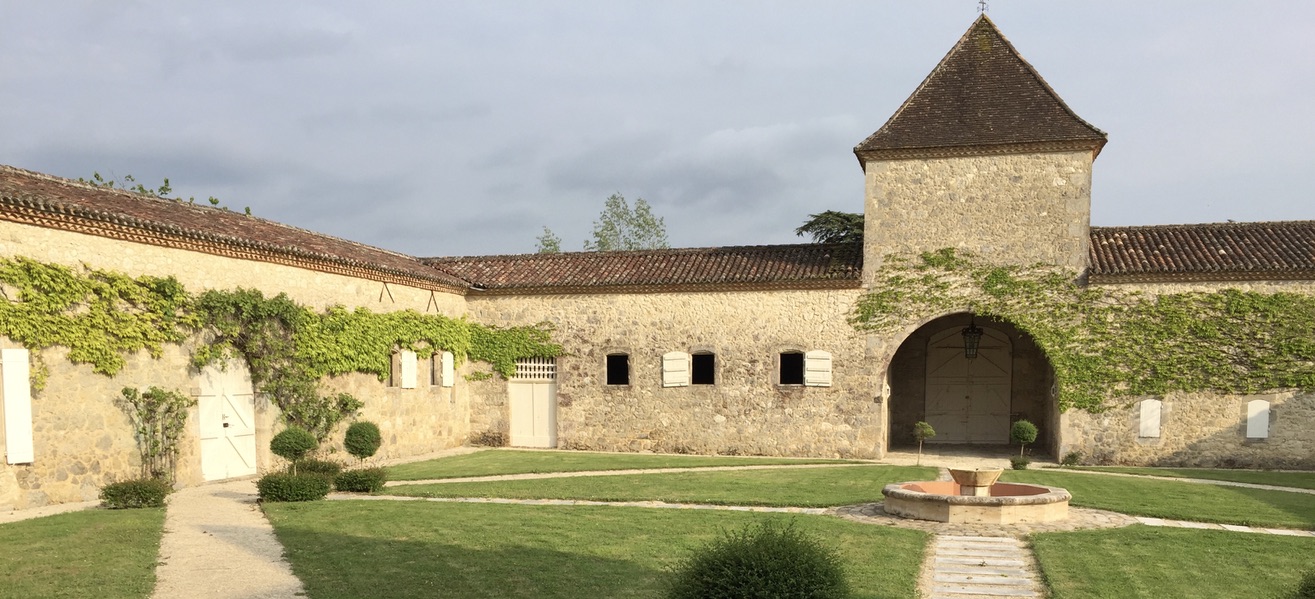Travel Lost
A sojourn in Gascony, a suspension of Spain.

We’d planned a trip for this September. It was to be an encore of sorts of our trip to Gascony in May 2018, when we spent a week under the influence of Kate Hill, an American expatriate and cultural and culinary educator who has lived in France for the past three decades. Her home, a small farmhouse called Camont, is bordered on one side by a canal on which is parked the Dutch barge, the Julia Hoyt, on which she, in an earlier period of her life, charted a flavorful course throughout Europe. Camont houses a rustic kitchen of wood and stone and fire, as well as a bigger, brighter, stainless teaching space equipped with professional appliances in which Kate teaches the techniques, from the rudimentary to the recondite, of butchery, charcuterie, and other savory arts.
We’d found our way to Kate that first time after we’d finished a hard year’s labor completing 1,000 Books to Read Before You Die, including several months’ immersion in the final editing and massive task of proofing. With the book finally off to the printer, we shelved our initial plan to revisit Rome—since enjoying the hum and hurry of the Eternal City, for all the inspiration it engenders, requires an investment of energy morning, noon, and night that I was afraid our depleted reserves would be unable to supply—and searched for a more leisurely, less self-directed alternative. Margot found it via a profile of Kate in one cooking magazine or another, and we signed on for a week under her care and tutelage, billed as “Insider’s Gascony.”
Turned out that it was just us and one fellow insider, a charming Canadian journalist who was combining work with play, but the intimacy of our group made our daily round of exploration, shopping, cooking, eating, and imbibing just the restorative routine we needed. Our accommodations were in a 17th-century chateau just down the road from Camont, in the town of Espiens. Flanked by vineyards front and back, the Château de Mazelières, in the midst of what appeared to be an unhurried renovation (its grand, elegantly empty spaces making it a nicely rentable venue for weddings and the like), exuded a confidential character that charmed me. The stone rooms were huge, as were the doorways that ushered one into them, which reached to nearly the full height of what must have been eighteen-foot ceilings. Walking from the kitchen and dining room through a central reception area and a few other large and sparely furnished chambers to our bedroom, opening and slowly closing the heavy doors behind us as we crossed each threshold, one moved through an etiquette of architected quiet that filled one with a happy sense of composure. The bedroom was enormous, its dimensions spanning, say, twenty feet in one direction and twenty-five in the other, with high, paneled windows of antique glass framing vines and sky and, after dark, the stars. It was easy to imagine Montaigne standing at them ruminating upon an essay, or Robin Hood bursting through the door behind him, sword drawn, in pursuit of a villain; which is to say, my fantasy life felt at home.
Every morning, Kate and her vivacious sidekick and business partner, Maureen, would pick us up at the chateau and ferry us on adventures to market towns, wineries, farms, and local landmarks. It was a kind of cultivated foraging, enlivened by conversation with the artisans—fromagers, butchers, bakers, vignerons, growers of fruits and vegetables—whose comestibles we collected. To stand before a cheesemonger’s display on a cobblestone street in one of these locales was to contemplate a taxonomy of taste and tradition that was enriching in its nuance and variety; pieces of lives and livelihoods were wrapped up in the paper parcels of butter or meat that were carefully tied and placed into our hands. Trade never seemed so necessary, or noble.
Back at Camont, we’d set to work making an apple tart, say, or roasting a fowl, preparing dishes in which ingredients exuded such character of color and texture that merely placing a chicken in a pot with leeks and carrots, herbs and bacon, was deeply nourishing; I could have looked at it all day and been satisfied—but, thankfully, hunger always got the upper hand. Of the many discoveries that we made there, the ones that have proven the most enduring, because the most portable, are a taste for armagnac and a delight in the wines of Elian De Ros, which I was thrilled to discover my own wine merchant, back in Connecticut, was familiar with and stocking.
We had such a marvelous time in Gascony that when we began thinking of planning another trip, we thought of Kate again, and signed on for her road trip to Catalunya and the Costa Brava. It would have been our first visit to Spain, but, alas, the pandemic had other plans for us. As the enticing prospect of that journey has disappeared from view, I’ve been brooding—on bad days, at least—on the thought that it may well be the last trip we’ll ever plan, that the world at large will not spin its way back to normal before the vicissitudes of age constrict our lives at small. In such moments, I regret all the places I’ve never yet seen despite always assuming I would—Spain, Greece, Scotland, Sicily, Saint Petersburg—and mourn those—Rome, Venice, Paris, Chartres, Cambridge, Umbria—I long to revisit. And I reach for a book to transport me to one of them. Soon enough, I imagine, a new destination will appear on the horizon, however far away.
